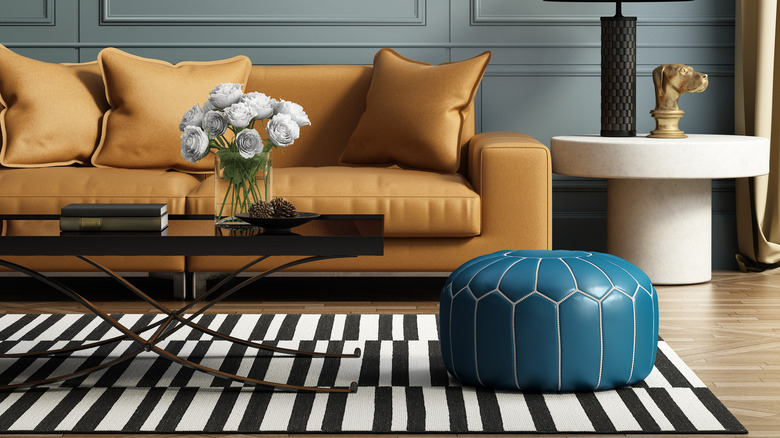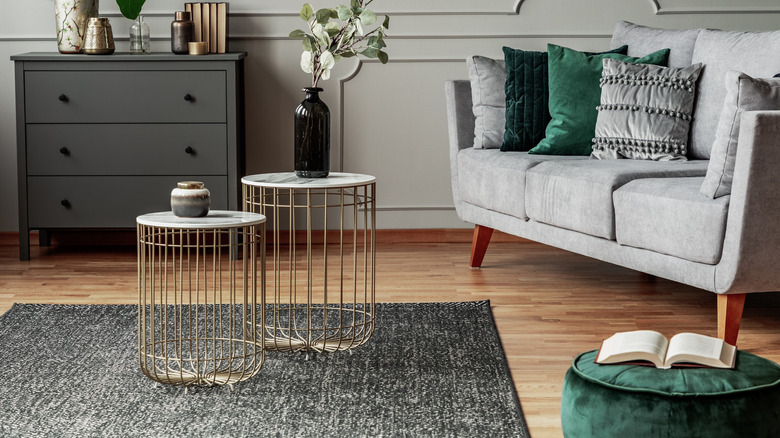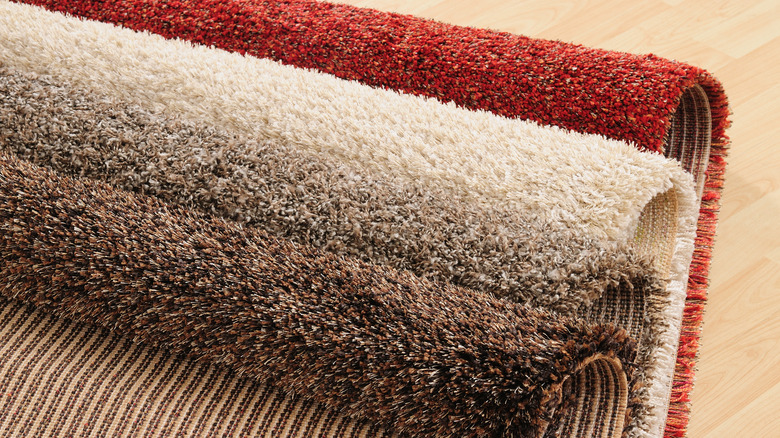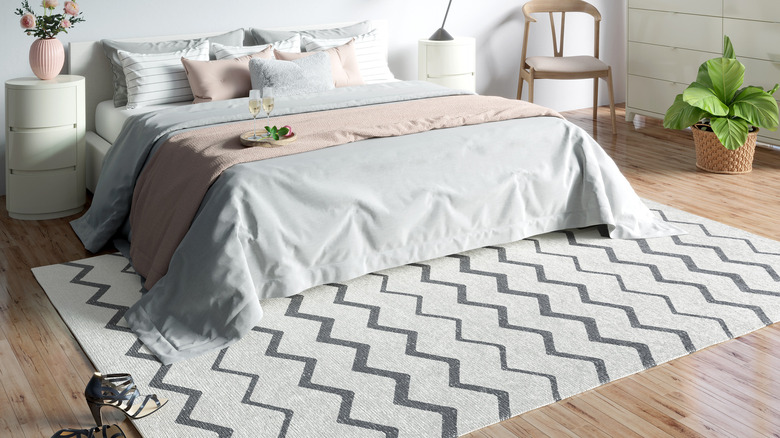3 Tips For Finding The Perfect Rug For Your Space
While rugs might sometimes seem like an afterthought, they are actually a huge investment and addition to any room. These important pieces can pull an entire home design together, making a difference between a jaw-dropping scheme or an average aesthetic. Finding the right one is key, but you must consider several points before dropping the cash on it. Understanding the measurements you need is just a small piece of the puzzle, and you might be surprised to find that something that sits on the floor could require so much attention.
The following tips will help you determine which rug is perfect for your space and ensure you feel confident in your choice. Most floor coverings require a little splurge, so you always want to have all the facts down before pulling out that credit card. According to West Elm, your rug will anchor everything in the room, including furniture and wall hangings, so don't cut corners — take your time and fall in love with your new addition because you will likely have it for a long time to come.
1. Determine its purpose
Not all rugs are created equally, and they certainly aren't all meant to serve the same purpose. For instance, runners are useful for hallways and entryways, keeping dirt and outside elements to a minimum and catching them before they spread to the rest of the house. They usually see more foot traffic than other floor coverings, so they will need to be sturdier. Area rugs are great for design and aesthetics but might sit partially under furniture or be placed out of the way, exempting them from wear and tear. If you do need an area rug to hold up to pets, kids, and other daily interactions, this is something to consider when choosing the size, material, and color.
It might be overwhelming to see how many different types are on the market, especially when things like padding and acoustics come into play. Does the rug need to muffle sound in a hardwood or tiled area? Will a rug pad make it more comfortable for guests and family? First, determine what purposes it needs to serve, then do the research on floor coverings that catch your attention. According to Ruggable, cushioned pieces are useful in hallways and the kitchen since we constantly stand and walk on them. Area rugs should be able to accommodate all the furniture in a room; otherwise, it could look small and slightly awkward.
2. Consider the material
If you own pets or have kids, chances are your floors might see a lot of dirt and wear daily. Certain rug materials are specifically made to withstand intense interactions, and the different builds offer benefits or drawbacks, depending on your home. For example, according to Perigold, high pile rugs boast fibers that are longer than other versions, which means everything from dander and dust to leaves and sand can stick to them more easily.
Opting for synthetic materials is good for busy households, too. According to PlushRugs, wool, nylon, and polypropylene are good options. Take the time to research what materials are in your potential purchase, then consider what space it will occupy and how much action it will see in 24 hours. Investing in sturdy fabrics will ensure your rug lasts for a long time and will keep stains or damage to a minimum, saving you time and money.
3. Pick your design (or lack thereof)
Not all rugs have to be a statement piece. A neutral or plain rug is completely fine if you want to protect the flooring underneath or provide traction in a room. However, if your décor already exudes intense, bold patterns or colors, having a subtle piece to contrast with them might actually give the space more dimension or character. Before beginning your rug search, look at the area in question, and determine how the other items around it coexist. Do you need more design or depth, or would a neutral, monochromatic floor covering benefit them more?
Some rugs have large, eye-catching patterns, while others have very simplistic ones mixed in with the colors. You don't necessarily have to opt for a plain white or gray, but you can, instead, find something in between. West Elm recommends using colorful rugs in spaces like a living or dining room or anywhere that needs multiple hues to pull the décor together. Depending on what you need, there is a floor covering to check the boxes; it just takes time and patience to find the absolute right option.



